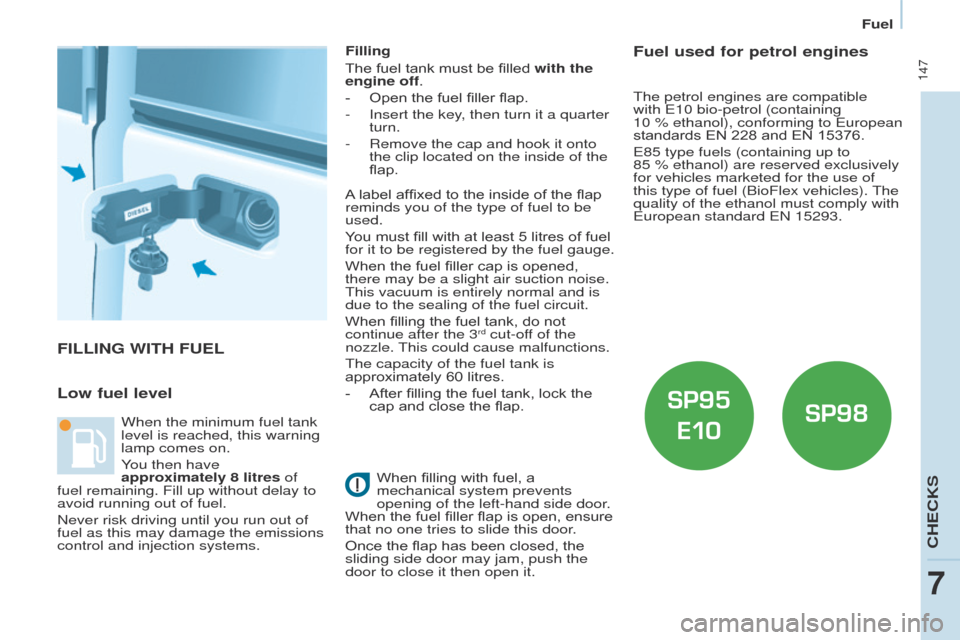147
Partner_2_VP_en_Chap07_Verification_ed02-2014
FILLING WITH FUEL
Low fuel level
Filling
The fuel tank must be filled with the
engine off.
-
Open the fuel filler flap.
-
Insert the key
, then turn it a quarter
turn.
-
Remove the cap and hook it onto
the clip located on the inside of the
flap.
When fillin
g with fuel, a
mechanical system prevents
opening of the left-hand side door.
When the fuel filler flap is open, ensure
that no one tries to slide this door.
Once the flap has been closed, the
sliding side door may jam, push the
door to close it then open it.
When the minimum fuel tank
level is reached, this warning
lamp comes on.
You then have
approximately 8 litres of
fuel remaining. Fill up without delay to
avoid running out of fuel.
Never risk driving until you run out of
fuel as this may damage the emissions
control and injection systems. A label affixed to the inside of the flap
reminds you of the type of fuel to be
used.
You must fill with at least 5 litres of fuel
for it to be registered by the fuel gauge.
When the fuel filler cap is opened,
there may be a slight air suction noise.
t
his vacuum is entirely normal and is
due to the sealing of the fuel circuit.
When filling the fuel tank, do not
continue after the 3
rd cut-off of the
nozzle. t
his could cause malfunctions.
t
he capacity of the fuel tank is
approximately 60 litres.
-
After fillin
g the fuel tank, lock the
cap and close the flap.
Fuel used for petrol engines
the petrol engines are compatible
with e 10 bio-petrol (containing
10
% ethanol), conforming to e uropean
standards EN 228 and EN 15376.
e
85 type fuels (containing up to
85
% ethanol) are reserved exclusively
for vehicles marketed for the use of
this type of fuel (BioFlex vehicles).
t
he
quality of the ethanol must comply with
e
uropean standard e N 15293.
Fuel
CHeCKS
7
